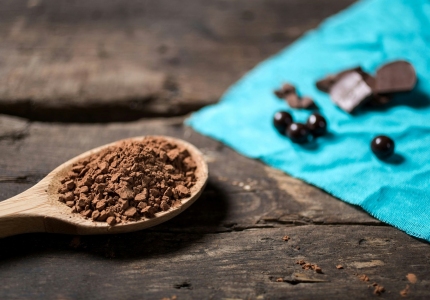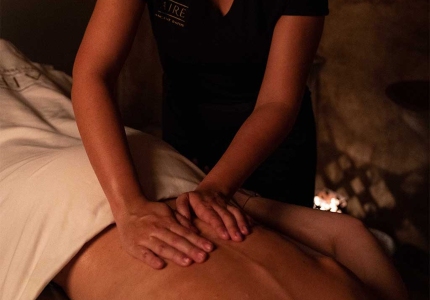Massage therapy is universally recognized for its power to promote relaxation and wellness. Among the various techniques available, many people often ask, "What is a Swedish massage?" This renowned form of therapeutic touch is one of the most popular and widely practiced methods in the world. In this article, we'll explore what a Swedish massage is, diving into its origins, fundamental techniques, and the benefits it offers.
Origins and History of Swedish Massage
To understand what a Swedish massage is, it's important to look at its origins. Swedish massage dates back to the early 19th century and is largely attributed to Per Henrik Ling, a Swedish physiologist who developed a system of therapeutic exercises. Ling's work laid the foundation for what we now recognize as Swedish massage. Another key figure in this history is Johan Georg Mezger, who refined and formalized the techniques that define this massage style today.
Over time, what is a Swedish massage has evolved, incorporating various techniques aimed at promoting relaxation and overall well-being. Its popularity spread globally, making Swedish massage a staple in wellness centers and spas worldwide.
Fundamental Techniques of Swedish Massage
Understanding what a Swedish massage is involves knowing the fundamental techniques that define it:
-
Effleurage: These long, gliding strokes are typically used at the beginning and end of a session, helping to warm up the muscles and set a relaxing tone.
-
Petrissage: This technique involves kneading and squeezing the muscles, effectively releasing tension and promoting deeper relaxation.
-
Tapotement: A series of rhythmic tapping movements, tapotement stimulates the muscles and enhances circulation.
-
Friction: Circular movements applied with pressure to target deeper muscle layers, helping to break down adhesions and relieve tension.
-
Vibration/Shaking: Gentle shaking or vibrating motions that help to soothe and relax the muscles.
Each of these techniques plays a role in what makes a Swedish massage such an effective method for relaxation and therapeutic relief.
Benefits of Swedish Massage
To fully answer the question, "What is a Swedish massage?", it's essential to discuss the benefits:
-
Muscle Relaxation: A Swedish massage is highly effective at alleviating muscle tension and stiffness, providing a deep sense of relaxation.
-
Improved Circulation: By enhancing blood flow, a Swedish massage promotes better cardiovascular health and helps flush out toxins from the body.
-
Stress Reduction: One of the main reasons people seek out a Swedish massage is for its ability to reduce stress and induce a state of calm.
-
Joint Flexibility: Regular Swedish massage sessions can increase the range of motion and flexibility in joints, making movement easier and more comfortable.
-
Emotional Well-Being: Beyond physical benefits, a Swedish massage positively impacts mental health, helping to improve mood and reduce anxiety.
Swedish Massage for Different Wellness Goals
When asking what is a Swedish massage, it's also important to consider how it can be tailored to meet different wellness objectives:
-
Relaxation and Stress Relief: A Swedish massage is an excellent choice for those looking to unwind and escape from the stresses of daily life.
-
Sports Recovery: Athletes often use Swedish massage to help with post-exercise recovery, reducing muscle soreness and preventing injuries.
-
Chronic Pain Management: For those suffering from chronic pain conditions, regular Swedish massage sessions can provide significant relief.
-
Improved Sleep: Many people find that Swedish massage helps enhance sleep quality by promoting relaxation and reducing stress.
What to Expect During a Swedish Massage Session
If you're curious about what is a Swedish massage and are considering trying it, here’s what you can expect during a session:
-
Consultation and Assessment: Your therapist will start with a consultation to understand your preferences and address any specific concerns.
-
Choice of Oils or Lotions: Massage oils or lotions are typically used to reduce friction and enhance the experience. You may be able to choose a scent or formulation that suits you.
-
Comfortable Environment: Swedish massage sessions are conducted in a serene environment, designed to promote relaxation with calming music and dim lighting.
-
Communication with the Therapist: Open communication is key to a successful session. Let your therapist know if you prefer lighter or deeper pressure, or if there are specific areas you’d like to focus on.
Things to Consider Before Scheduling a Swedish Massage
Before booking, consider these factors to ensure you’re fully prepared for what a Swedish massage entails:
-
Health Conditions: If you have any medical conditions, it’s advisable to consult with a healthcare professional before scheduling a massage.
-
Allergies: Inform your therapist of any allergies to massage oils or lotions to avoid adverse reactions.
-
Pregnancy: Pregnant individuals should seek advice from their healthcare provider and choose a therapist experienced in prenatal massage.
So, what is a Swedish massage? It's more than just a massage; it's a comprehensive approach to physical, mental, and emotional well-being. Whether you’re seeking relief from muscle tension, stress reduction, or simply a relaxing escape, Swedish massage offers a versatile and deeply therapeutic experience. Incorporate Swedish massage into your wellness routine and discover the benefits it can bring to your life.



